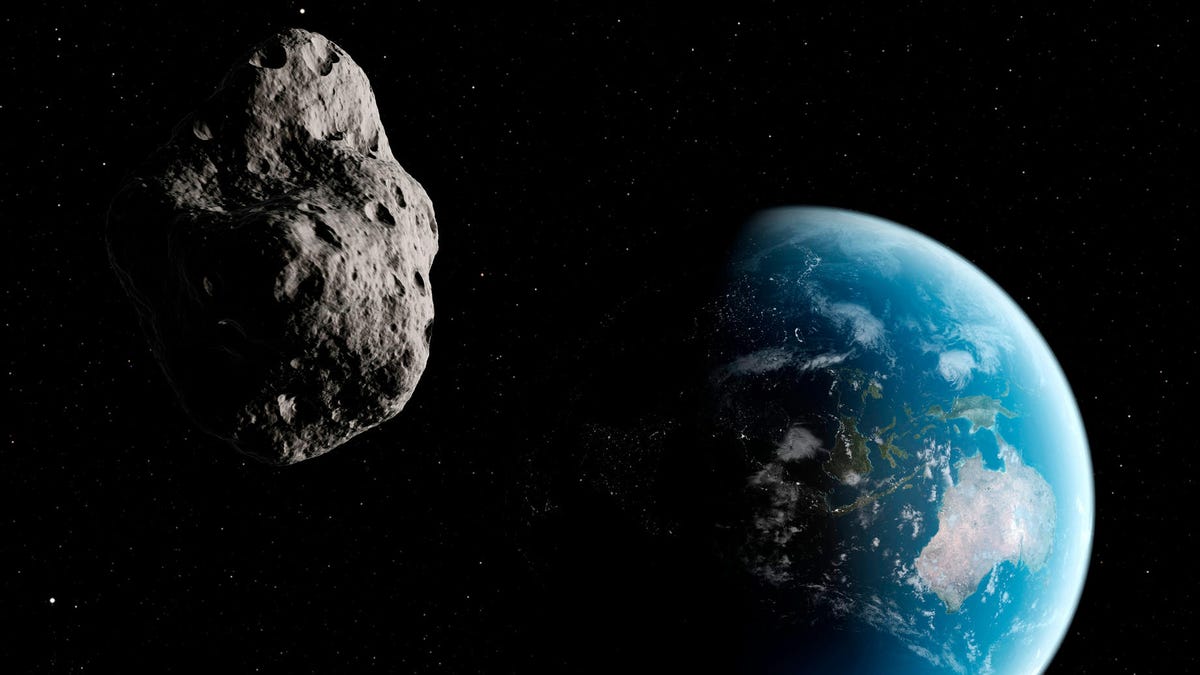Two asteroids zipped by Earth hours before anyone noticed
The bus-sized pieces of space debris whipped by us at relatively close range over the weekend.

Here's what an asteroid approaching Earth might look like from space.
They almost snuck by undetected, but two small asteroids were discovered over the weekend just hours after they whizzed past us about 72,000 miles away -- about one-third the distance to the moon.
Asteroids 2018 NX and 2018 NW were first spotted by the Palomar Observatory in Southern California on Sunday as they passed our neighborhood on the way back to further reaches of the solar system.
Each of the space rocks are estimated to be about the size of a school bus, with a diameter around 10 meters (33 feet), but they don't appear to be traveling together. That's because 2018 NW was observed traveling at a velocity of 21.3 km/s (47,647 mph), or about five times faster than 2018 NX.
Neither asteroid posed a threat to us, and they also had nothing to do with the fireball that people across the central US saw Sunday evening.
In fact, an asteroid passes harmlessly by at a distance to us closer than the moon every few weeks. It is interesting and rare to see a pair zip by so close to one another, however.
A number of these asteroids are discovered for the first time in our cosmic rearview, after they've already passed by the point of closest approach to Earth, as was the case with this pair. This is often due to the small size and relative darkness of many asteroids: They're just hard to spot until they're really close.
Last month, the tiny asteroid 2018 LA was discovered just before it slammed into the atmosphere. Fragments of the resulting meteorite were later recovered in Botswana.
As always, heads up!

